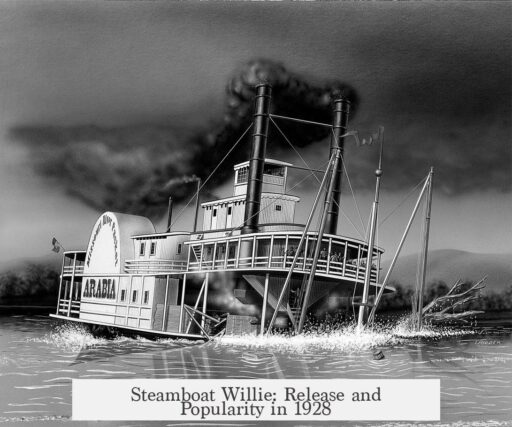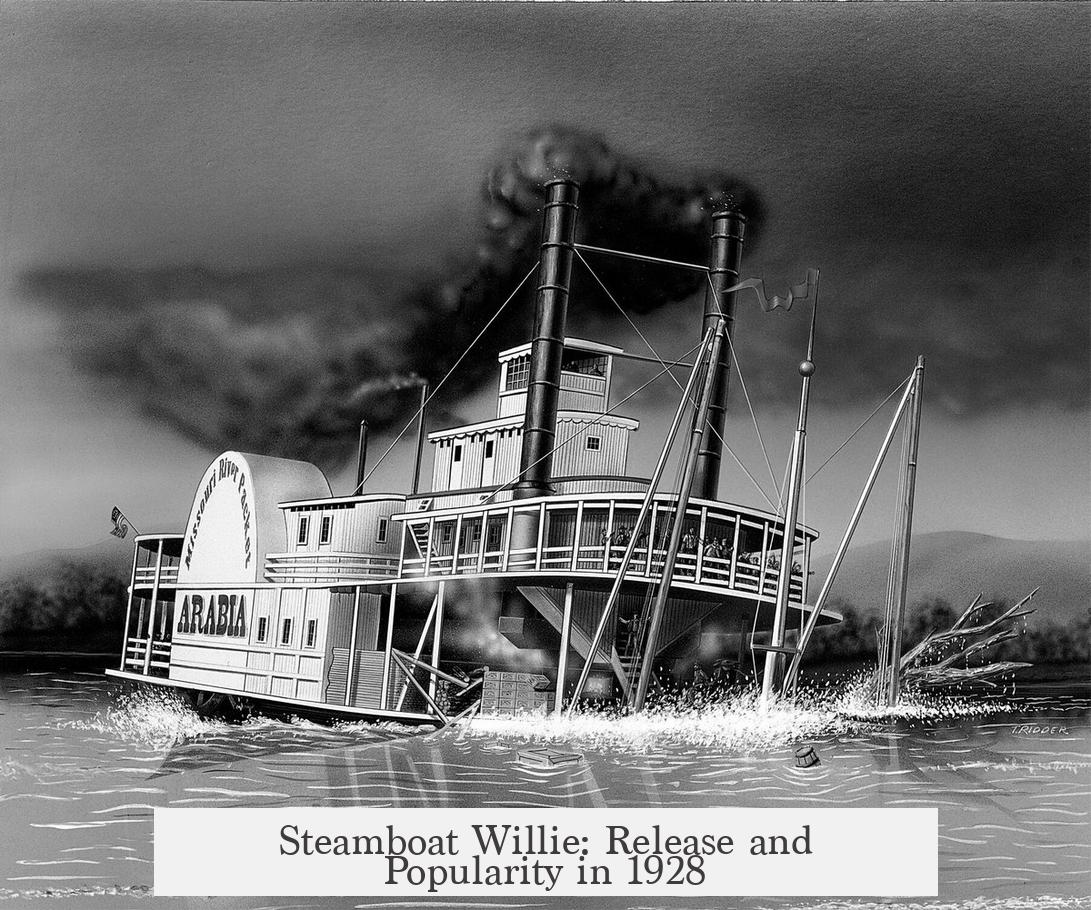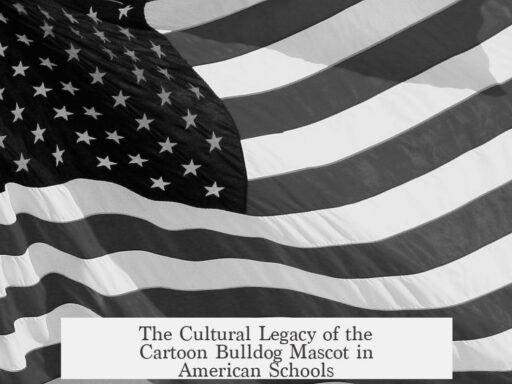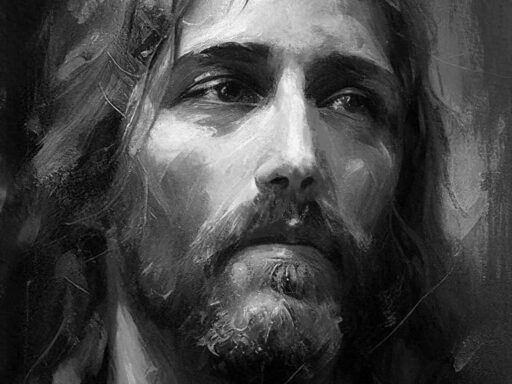Steamboat Willie was released in 1928 as a groundbreaking animated short that combined synchronized sound with innovative animation techniques. Its release marked the debut of Mickey Mouse in a film that quickly captured public attention and professional praise.
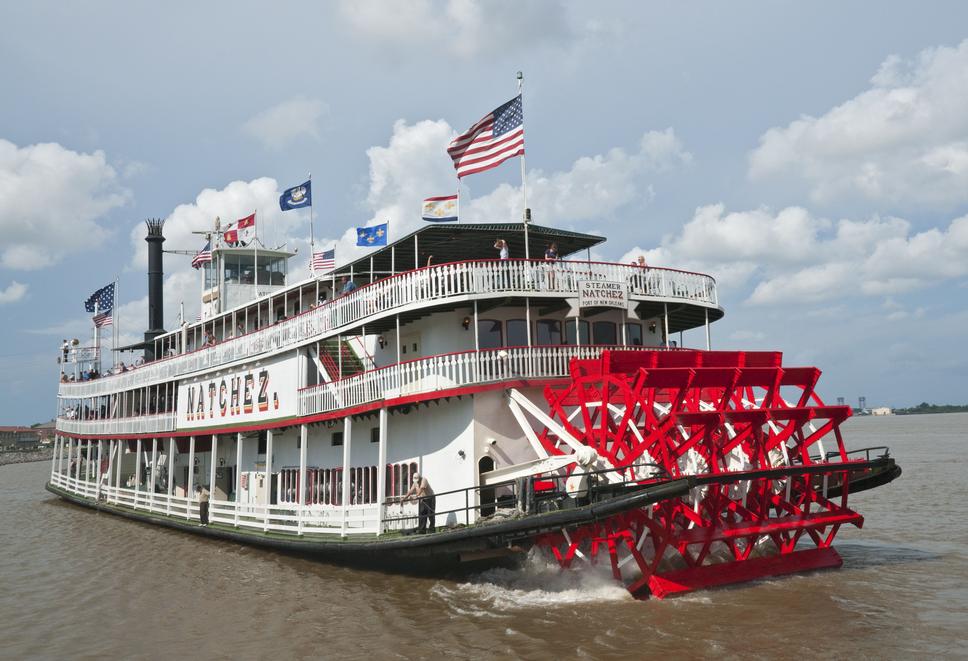
The origins of Steamboat Willie closely link to Walt Disney’s need for a new character after losing his earlier creation, Oswald the Lucky Rabbit, due to Universal’s control and the loss of his animation team. To regain creative control, Disney, along with his brother Roy and animator Ub Iwerks, developed Mickey Mouse. Iwerks likely handled most design work, resulting in a character that quickly gained appeal.
Before Steamboat Willie, Disney created two silent Mickey Mouse cartoons: Plane Crazy and Gallopin’ Gaucho. Both were self-funded and failed to find a distributor, putting Disney under financial strain. The breakthrough came when Walt Disney, inspired by the 1927 success of the feature film The Jazz Singer, decided to integrate synchronized sound into the third Mickey cartoon.
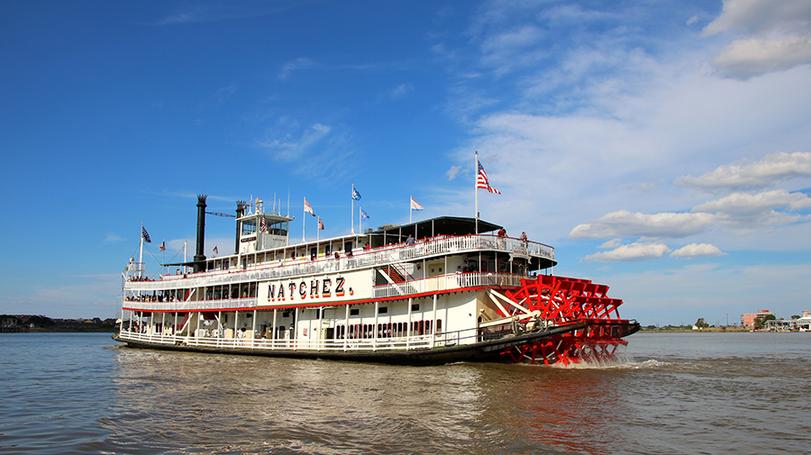
Contrary to common belief, Steamboat Willie was not the first sound cartoon; Max Fleischer had produced sound cartoons earlier. However, those lacked synchronization and audience impact. Disney and Iwerks approached sound integration differently, employing a “click track.” This innovation set a consistent tempo during music recording, enabling animators to align animation closely with the soundtrack. As a result, music and sound effects enhanced animated actions precisely, like the comedic effect of Mickey slipping on a soap bar with the accompanying slide whistle sound.
Steamboat Willie premiered during a two-week test run at the Colony Theater in New York City under Celebrity Productions. It received immediate acclaim, with trade publications like Variety offering positive reviews. The initial success led to screenings at the Roxy, New York’s largest movie theater, and subsequent nationwide distribution.
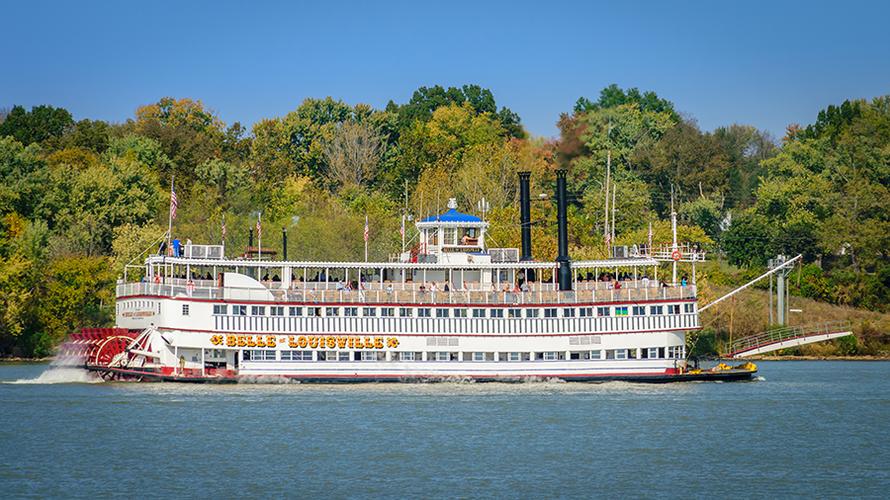
This success was not isolated. Disney later released sound-enhanced versions of earlier cartoons like Plane Crazy, followed by a series of Mickey Mouse shorts. Beyond cartoons, the popularity of Mickey spawned merchandise and toys, broadening Disney’s commercial reach. The studio’s commitment to innovation didn’t stop with sound. Disney pushed technological boundaries by experimenting with color, employing renowned artists, transitioning to feature-length animations, and eventually expanding into theme parks and television. This continuous pursuit of advancement contributed significantly to Mickey Mouse’s enduring fame.
| Key Factors in Steamboat Willie’s Popularity | Details |
|---|---|
| Creation of Mickey Mouse | Developed by Disney and Ub Iwerks after Oswald loss; fresh, appealing character design |
| Sound Synchronization | Use of “click track” for aligned music and animation; enhanced comedy and engagement |
| Initial Release Strategy | Test run at Colony Theater, NYC; favorable reviews and large venue bookings followed |
| Innovative Animation | Detailed synchrony between sound effects and visuals; novel technical achievement |
| Follow-up Success | Subsequent sound cartoons, merchandising, and continuous innovation keeping interest high |
Several elements combined to make Steamboat Willie a pioneering success in 1928. The timing coincided with audience fascination for sound in film. Disney’s new character filled a market gap with a charismatic presence. The technical achievement of proper sound synchronization set the cartoon apart from earlier attempts in the industry.

Mickey’s personality and humorous timing resonated widely. The entertainment industry took note, and the cartoon’s commercial success offered Disney leverage for future productions. Steamboat Willie effectively launched Mickey into public consciousness, setting a foundation for decades of Disney innovation.
- Steamboat Willie featured the first widely successful synchronized sound animation using a “click track.”
- Mickey Mouse was created in response to losing Disney’s previous character rights.
- The short’s premiere at New York theaters earned immediate positive critical and audience reception.
- The combination of sound, animation, and humor marked a key industry advancement.
- Its success enabled Disney to expand production, merchandising, and technological innovation.
How was Steamboat Willie released and what made it so popular in 1928?
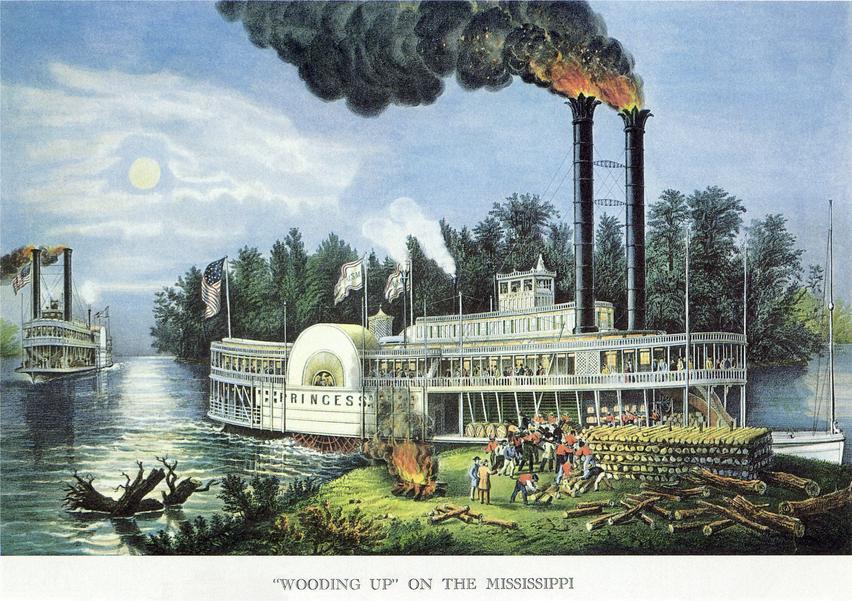
Steamboat Willie was released in 1928 with groundbreaking synchronized sound, captivating audiences and marking a revolutionary moment in animation history. But to understand the full story, we need to rewind a bit and dive into the fascinating events that led up to this iconic moment.
Let’s start with the birth of Mickey Mouse, arguably the most famous cartoon character ever created. After Universal snatched Walt Disney’s earlier character, Oswald the Lucky Rabbit, and even poached much of his animation team, Walt found himself stranded and low on resources. Facing near bankruptcy, Walt and his brother Roy decided to create a brand new character to regain control over their work. Enter Mickey Mouse — a risky gamble that paid off in the biggest way imaginable.
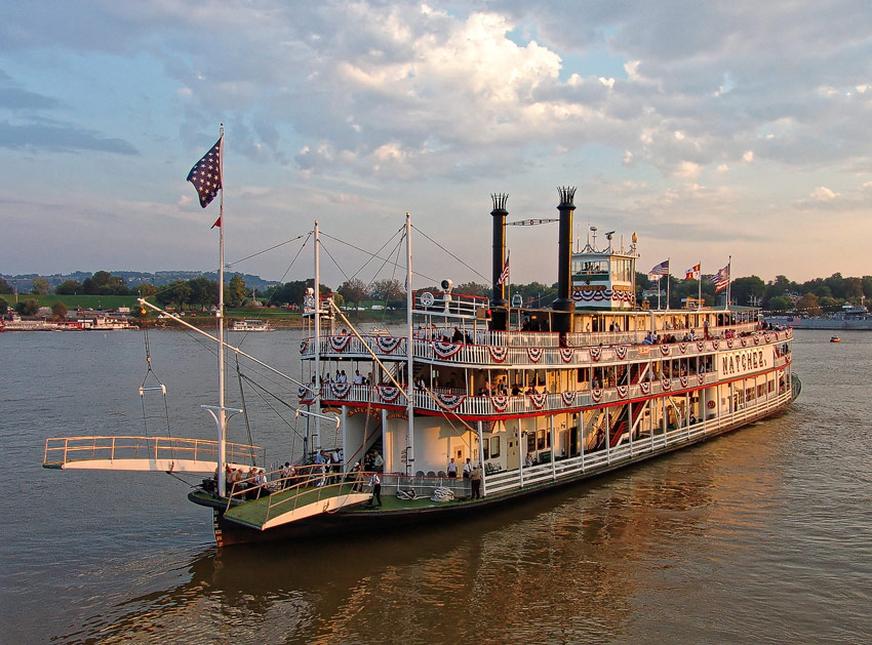
While Walt got all the credit, Mickey’s design likely came from Ub Iwerks, Walt’s old friend and talented animator. This partnership, featuring Disney’s storytelling genius and Iwerks’ animation wizardry, would soon become legendary.
Now, here’s a twist: The first two Mickey cartoons, Plane Crazy and Gallopin’ Gaucho, were silent films. Disney produced these shorts out of pocket but couldn’t secure a distributor, so they basically gathered dust. Imagine being on the brink of financial disaster and seeing your beloved creation stuck in limbo — tough times, right?
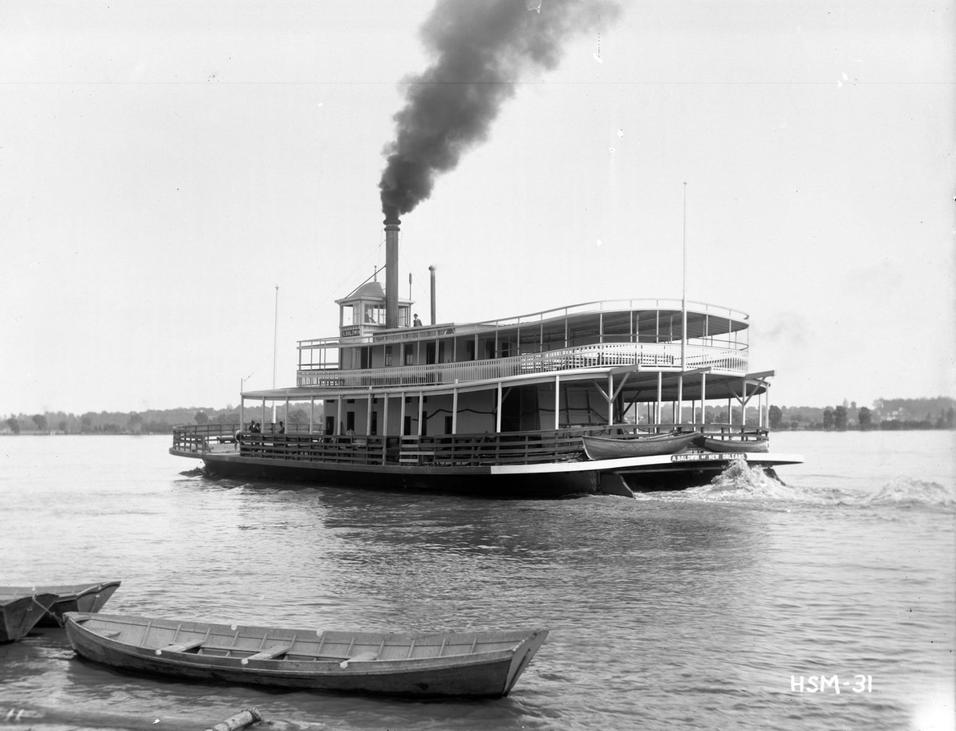
Then came a spark of inspiration. Walt watched the enormous success of The Jazz Singer, the first feature-length film with synchronized recorded sound, and had a lightbulb moment. The next Mickey Mouse cartoon would embrace sound—and not just any sound, but synchronized sound that truly aligned with the animation.
Here’s an interesting fact: Many people think Steamboat Willie was the first-ever sound cartoon. In reality, Max Fleischer beat Disney to the punch with 19 sound cartoons between 1924 and 1926. Unfortunately, technical pitfalls and poor synchronization meant those early efforts never caught on with audiences. Disney recognized these problems and sought a better solution.
The secret sauce was the use of a “click track.” This nifty innovation allowed the music to be recorded at a steady, known tempo. Animators then matched their drawings beat-for-beat to the music. This synchronization made a massive difference — the animation flowed perfectly with the sound effects and score. For instance, picture Mickey slipping on a bar of soap: silent it’s funny, but add a perfectly timed slide whistle, and suddenly it’s comedy gold.
When it came time to release the film, Disney partnered with Celebrity Productions. They booked Steamboat Willie for a two-week test run at New York City’s Colony Theater. The reception? Immediate and overwhelming. Critics at Variety and other trade magazines showered it with praise. The print went next to the Roxy, the biggest movie palace in NYC, before reaching theatres nationwide.
This success greatly boosted Disney’s fortunes. But was it just a one-hit wonder? Not at all.
Following Steamboat Willie, Disney revisited Plane Crazy, adding sound this time and distributing it widely. Mickey shorts kept rolling out, each pushing the envelope further in animation. The merchandising that followed cemented Mickey’s place as a household name — a character not just on screen but adorning toys and products everywhere.
Yet, it wasn’t just Mickey or the sound novelty that made Disney a titan. Long after 1928, Walt invested heavily in innovation. His studio explored color animation, hired renowned artists to elevate production quality, and eventually moved into feature-length films, television, and even theme parks. This commitment to progress ensured Mickey’s (and Disney’s) ongoing relevance and global resonance.
Why did Steamboat Willie resonate so deeply in 1928?
- Technical Innovation: The synchronized sound was crisp and perfectly timed, a fresh experience no one had truly seen before.
- Character Charm: Mickey Mouse’s playful personality clicked with audiences instantly.
- Industry Timing: Viewers were hungry for new entertainment forms after silent films dominated for so long.
- Effective Distribution: Celebrity Productions’ strategic testing and rollout created buzz and demand.
- Critical Acclaim: Reviews in major publications validated the cartoon’s worth and pushed wider adoption.
To think of it, all this sprang from a moment of crisis at the Disney studio — a near-collapse turned into creative gold. Next time you hear the theme from Steamboat Willie, remember that this wasn’t just a cartoon; it was a carefully engineered breakthrough that reshaped animation forever.
Could today’s content creators learn a thing or two from Walt and Ub’s grit and relentless innovation? Absolutely. Stay flexible, focus on quality, and don’t fear experimenting with new technology. The success of Steamboat Willie shows that striking timing, paired with creative courage and smart tech choices, can launch you straight into the spotlight.
